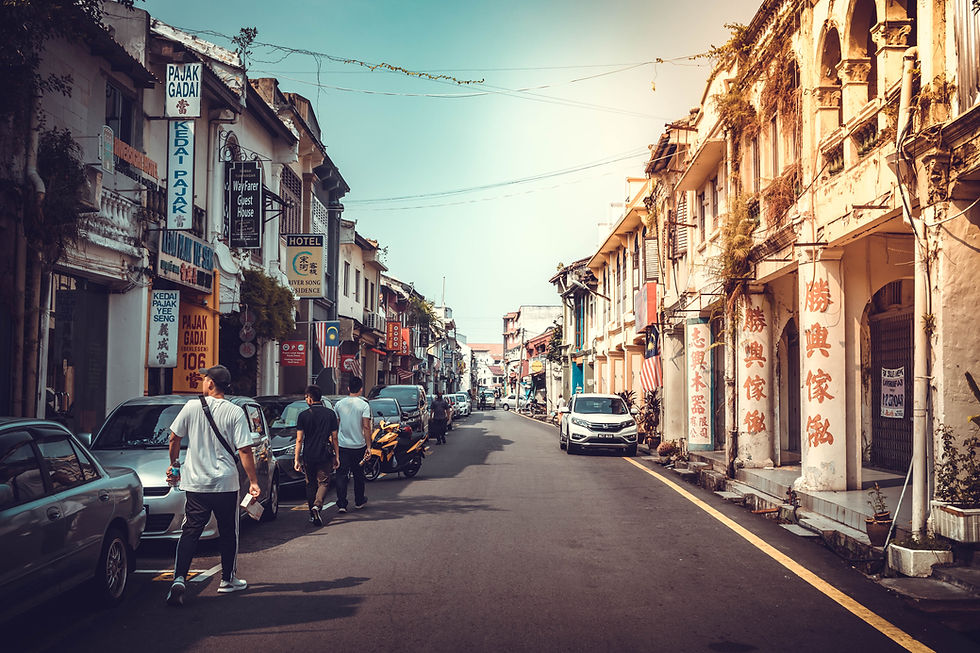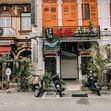Return of the public realm
- Shuhana Shamsuddin
- Feb 26, 2021
- 5 min read
The public realm that is the ‘face’ of the city supposedly made for and owned by the public is the acid test for good urban design. It is the one that sets a city having identity and sense of place and the one that is not. Examples of the public realm are the streets and squares or open spaces within the city fabric that are used by the public. Another feature of the public realm is the sense of vitality they project to the city through the colourful display of activities and the behaviour of the locals.

Traditionally many towns in Malaysia were built by the waterfront be it riverside, estuary or by the sea due to water-based transportation. Hence the waterfront used to be the public realm that brings the city folks together especially at the marketplace strategically located by the water bodies to be within the proximity of the jetties of the water-based transportation. We could see how the market place at the waterfront becomes an important node for the towns and cities in Malaysia until the arrival of land-based transportation that drove the cities to turn their backs to the waterfront. The market place was instrumental in giving the sense of vitality as the most celebrated public realm through the trading activities occurring both indoors and outdoors, lending the market place its sense of place. In the past, these public realms in the form of ‘pasar basah’, ‘pekan sehari’, ‘pasar tamu’ are the places that attract the locals to the towns and cities. The Pasar Siti Khadijah, Pasar Payang, Pasar Chow Kit and Pasar Tamu Satok are examples of the public realm in the form of market activities. The ‘pasar malam’ and ‘pasar tani’ of our today’s situations are examples of a public realm that is temporal in nature.
The other form of public realm and perhaps the most popular one worldwide is the streets. Streets differ from roads because they are a form of behavioural setting that support the activities in the city. Whilst the road served the purpose of facilitating communication and bringing people and goods from one place to the other, the street is the public outdoor theatre in the city. This is the stage where one can observe the behaviour of the locals in their natural settings. The success of a street in becoming a public realm is when the design of the physical setting is congruent to the type of activities taking place attracting diverse groups of people to perform their activities there.

One of the uniqueness of Malaysian cities’ streets then was the building typology known as the shophouses which lined the streets. The old shophouses that formed the streets then have a transition space that links the shops and the streets called the five-foot walkways. What started as a building by-law requirement to allow the uninterrupted passage of the pedestrians along the shophouses resulted in the creation of a public realm that is climatically and culturally responsive giving the Malaysian cities their sense of place. Besides acting as a passageway for pedestrians the five-foot walkways are also spilling over spaces for the shopkeepers to ply their trades that provide the transparency qualities in the townscape. The continuous five-foot walkways that are sheltered from the elements also make the streets walkable.
The modern shophouses now did not fully embrace the character of the traditional shophouses where the arcaded walkways are nothing more than just an exposed overhang. The concept of people living and working within the same building which is now seen as the most sustainable way of living is no longer practised. The modern shophouses are now a mundane design devoid of the ornaments that used to add colours to the townscape. Together with the car-oriented priorities of the city fathers, the streets no longer act as a public realm for the cities.

Finally, our cities used to have a public realm in the form of a turfed open space called the ‘padang’ strategically located like a green lung in the heart of the city. A legacy from the colonial city planning approach, the ‘padang’ was usually enclosed by civic buildings serving the function of a setting for the civic core of the cities. This is similar to the function of a square in many medieval and even contemporary European cities. What makes the ‘padang’ unique as a public realm is that its size enables it to hold the activities that are of festivity in nature as well as sporting events right in the city centre. The Dataran Merdeka of Kuala Lumpur and the ‘padang’ of Ipoh are examples of the public realm that give a sense of place to its cities.

Our modern cities are now characterised by a public realm that occurred indoors in private owned buildings known as shopping malls. There is an increasing trend of shopping malls incorporating a design that provides gathering spaces and leisure attractions within the buildings. Designed to incorporate parking spaces within an air-conditioned building to deal with the tropical climate, the shopping malls now served as a ‘miniature city’ within a city driving people away from the high streets and the old city centres. Although they provide the convenience of a one-stop shopping centre, the invasion of the shopping malls with their international design has robbed the city centres of their character and in many ways killing its old centres. The Covid-19 pandemic has now opened our eyes to the need for more outdoor public spaces and the return of the public realm, which rendered our shopping malls redundant in such situations.
We now need to bring back our public realm and come to terms with the climate that has been bestowed upon us by our Creator. We should design our public spaces and cities with the kind of climate that we inherited. Putting a roof on top of a street like Petaling Street is not a solution to the problem nor building more and more shopping malls where the climate can be controlled internally. We need to encourage more passive design buildings and understand our own climate when we design the buildings that lined our streets and the open spaces in the city centres. We need to embrace the tropical climate in designing our public realm and not try to pretend that we are in temperate climate countries. Once we are committed to designing with the tropical climate we will probably see the return of our public realm that will not only provide a behavioural setting for the public but also displaying our respect for the climate, our heritage and culture. Perhaps then we will no longer turn our back on the climate in the way we design our cities and the public realm.











Comments